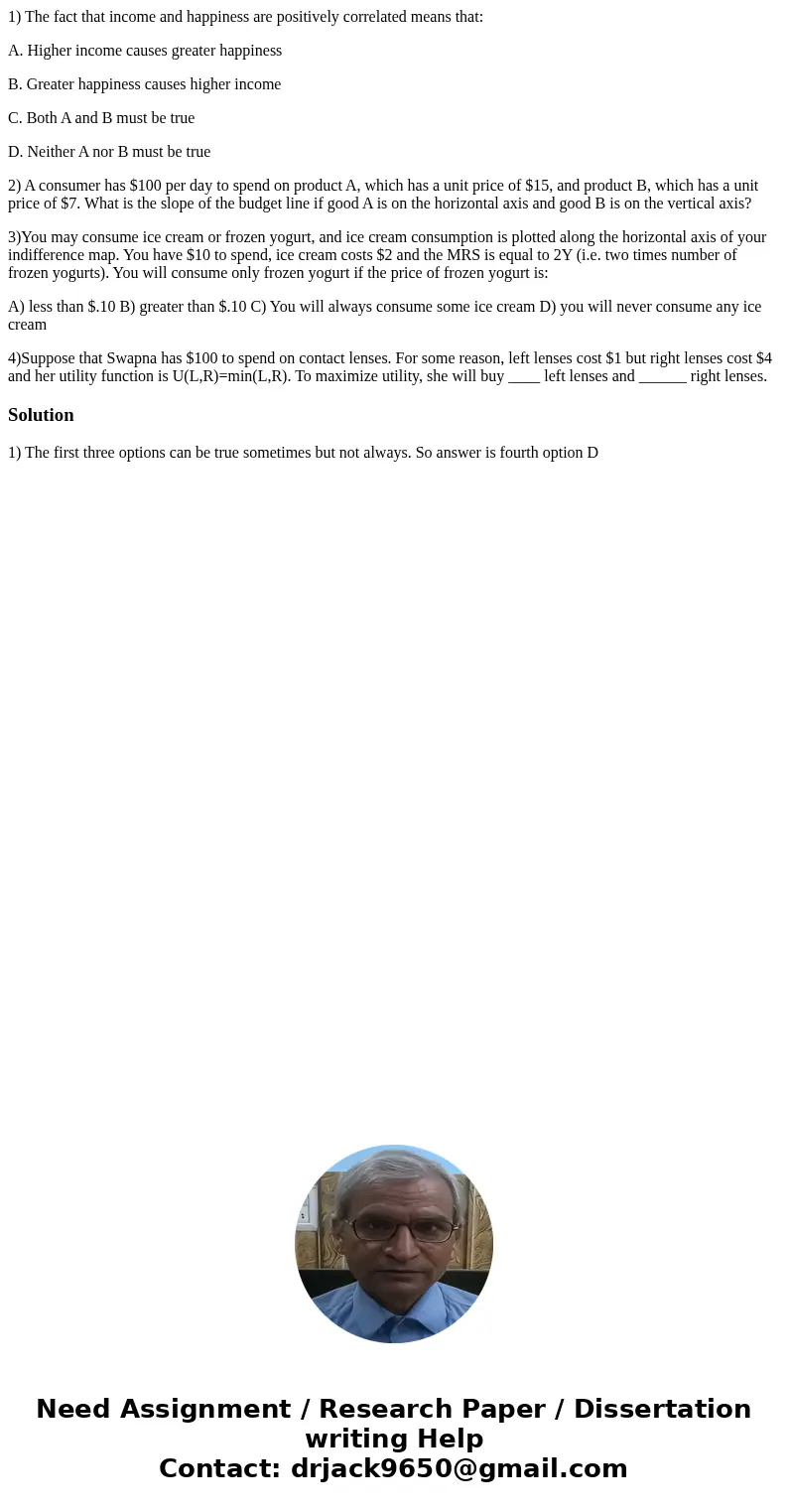1 The fact that income and happiness are positively correlat
1) The fact that income and happiness are positively correlated means that:
A. Higher income causes greater happiness
B. Greater happiness causes higher income
C. Both A and B must be true
D. Neither A nor B must be true
2) A consumer has $100 per day to spend on product A, which has a unit price of $15, and product B, which has a unit price of $7. What is the slope of the budget line if good A is on the horizontal axis and good B is on the vertical axis?
3)You may consume ice cream or frozen yogurt, and ice cream consumption is plotted along the horizontal axis of your indifference map. You have $10 to spend, ice cream costs $2 and the MRS is equal to 2Y (i.e. two times number of frozen yogurts). You will consume only frozen yogurt if the price of frozen yogurt is:
A) less than $.10 B) greater than $.10 C) You will always consume some ice cream D) you will never consume any ice cream
4)Suppose that Swapna has $100 to spend on contact lenses. For some reason, left lenses cost $1 but right lenses cost $4 and her utility function is U(L,R)=min(L,R). To maximize utility, she will buy ____ left lenses and ______ right lenses.
Solution
1) The first three options can be true sometimes but not always. So answer is fourth option D

 Homework Sourse
Homework Sourse